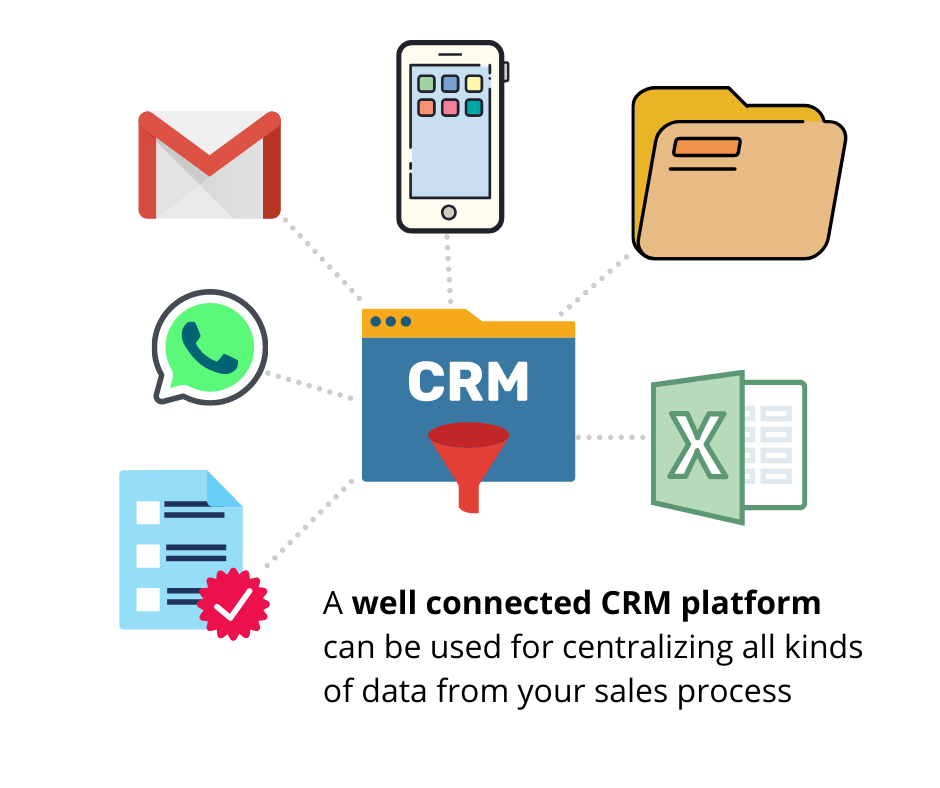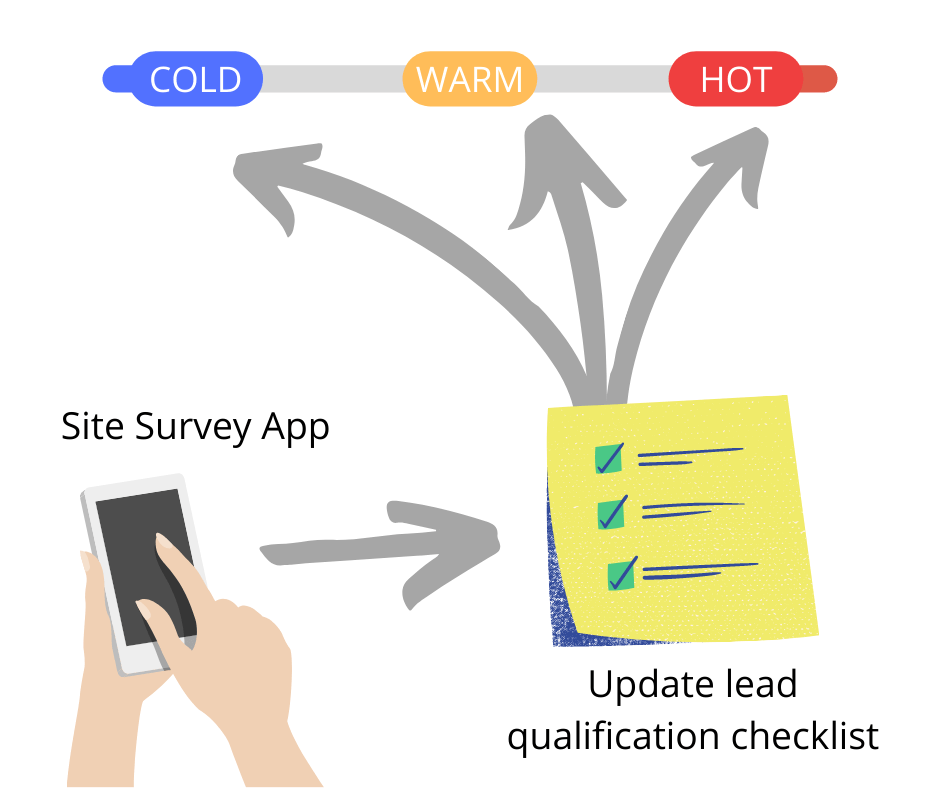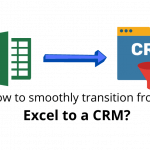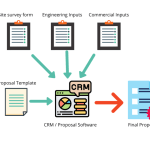Two important parts of sales are -
- lead generation
- lead management & conversion
You need to get BOTH of them right to make sales. Even if you have very cost efficient lead generation process, it will mean very little if you're not able to efficiently convert those leads.
Yet, most business owners tend to focus mostly on the lead generation part. Perhaps because it is very vividly apparent that more leads will mean more business.
Importance of an efficient lead management process is unfortunately not so easily apparent. And even if you know that you should have an efficient lead management process, you may not necessarily know how to measure that efficiency and then improve it.
Have you already figured out a way to measure and improve your conversion rates, cost of customer acquisition, average sales cycle durations and cost of sales?
If not, let's find out how you can do that.
Basic principles
First measure then improve
As the very first step, you must have a clearly articulated sales process with all the moving parts. Next, make a plan to measure the important parameters in your sales process such as - number of leads coming in, average time spent in meetings / calls with each lead in the sales funnel, number of leads converted etc.
You cannot improve what you cannot measure - plain and simple.
Centralize your data
It is common for sales teams to use a variety of tools during the sales process - emails, spreadsheets, messaging apps, CRM etc.
So the important numbers that you want to measure (for example - number of calls or emails per lead) are scattered across multiple disconnected systems.
You must find a way to centralize this data - to be able to regularly measure it.
Use automation to improve efficiency
Once you are able to measure how leads are flowing through different stages in your sales process, you will be able to improve each of those stages.
Automation is going to help every now and then to make your sales pipeline more efficient.
Use automation wherever possible, let your sales team focus on building better relationships.
Best practices for lead management
Now let's look at some recommended lead management practices.
Clearly defined process
Start by clearly articulating the sales process for your business. You can be as detailed as possible. This will help in two ways -
- Your team will know what steps to follow (if they didn't already)
- You will be able to visualize how the lead flow through this process can be measured
You can start by clearing a simple flowchart in a word document or on a whiteboard. Then, invite your sales team for a discussion on your flowchart. As you start discussing, go on adding details to the sales process.
When you are ready with a well articulated lead management framework, you can set up a system to measure the lead flow through that framework.
Centralized sales tracking (CRM) platform
The most important goal for your lead management process is going to be to improve overall sales. For this, you will need to first measure the parameters that directly or indirectly influence your sales.
For example -
- Lead conversion rate directly impacts your overall sales. Higher conversion rate will mean higher sales.
- However, average number of meetings per lead is an indirect influencer. More meetings per average leads will mean your sales team is stretched thin. They will not be able to talk to more number of customers if they have too many meetings with each and every lead.
Before you can improve your sales, you will first need to understand how different factors are affecting your sales numbers. And for that you will need to set up a system to measure all possible details in your lead management workflows.
Best way to do this is to use a centralized Customer Relationship Management (CRM) platform for sales tracking.
You will also want to connect your daily work management tools to this CRM platform - email accounts, spreadsheets, shared drives, phone calls, messaging apps. So that each and every minute details get tracked in your central CRM system, helping you to identify exactly what you need to change to improve your overall sales.
Fuzen CRM connects with all popular work management tools like spreadsheets, emails, folders etc. You can set up your sales process on Fuzen platform to enable centralized tracking of your lead management process.
Lead qualification system
One common mistake most sales teams make is not properly qualifying leads. If you're not careful, it is easy to get excited about each and every person who enquires about your products.
But quite often people are just curious about your product and may not have strong intent to buy. If you spend the same amount of time with each onlooker, you will waste a lot of your time.
You need to judge the 'intent to buy' in order to qualify a lead and then focus most of your time on people who have a serious intent to buy.
You can use a lead scoring system to decide how serious someone is about actually buying your product. In addition to buying intent, they should also have the budget and purchase authority. Otherwise you would be wasting your time with the wrong person.
Asking following questions would help to qualify leads -
- When do you need this product? - to understand intent and urgency
- Have you allocated any budget for this? - to understand intent and authority
- What are the most important features that you are looking for? - to understand if any serious thought has been given to this purchase
- Who will need to sign off on the final deal? - to understand authority
Lead nurturing
Those leads who qualify with strong intent and authority to buy, will be warm leads to be given priority your lead management workflow. Others who are not quite ready to buy yet, should be nurtured until they are warm enough to buy.
Majority of new leads that come your way will not be ready to buy immediately.
First, find out the reason that is holding them back and then put them through a lead nurturing process which can mitigate that block from their minds.
For example, most commonly your leads will see the value in your product but they will not see the urgency to have the product right away. In such case send them series of emails, case studies, invite them to webinars etc. which talk about the downsides of not having the product.
Educate your leas about the value of your product. Over time, convince them that they are losing out by not having your products / services.
Once you are able to convince a lead this way, he will be ready to buy and then you can have a sales oriented discussion about features and pricing.
Automated workflows
Automation can directly improve the efficiency of your sales process by lowering the manual efforts involved.
If you automate your lead management practices, your sales team will be better able to talk to more potential customers and build better relationships with warm leads.
Some sales related tasks can be easily automated -
- Importing leads from different sources (email, websites, Facebook / LinkedIn pages) to CRM
- Follow up emails and messages to leads
- Drip email sequences for nurturing leads
- Creating proposals using customer data from CRM
Fuzen CRM connects easily with Google Drive apps to enable many different kinds of automation within your sales process. Use standardized proposal templates and email templates to send those proposals. Templates will help you to easily extend the scope of process automation.
Set goals and iterate your sales process
To improve your sales process, set up meaningful targets, measure all the related parameters. Make sure you deeply understand how each factor affects your end goal.
Then make changes to your sales process, give it some time to take effect. Measure the results again and whenever needed re-adjust your goals.
This is going to a never ending, integrative process as there is always going to be room for even more sales.
So make these lead management best practices a part of your company culture or at least your sales team culture.

Pushkar is a seasoned SaaS entrepreneur. A graduate from IIT Bombay, Pushkar has been building and scaling SaaS / micro SaaS ventures since early 2010s. When he witnesses the struggle of non technical micro SaaS entrepreneurs first hand, he decided to build Fuzen as a nocode solution to help these micro SaaS builders.








